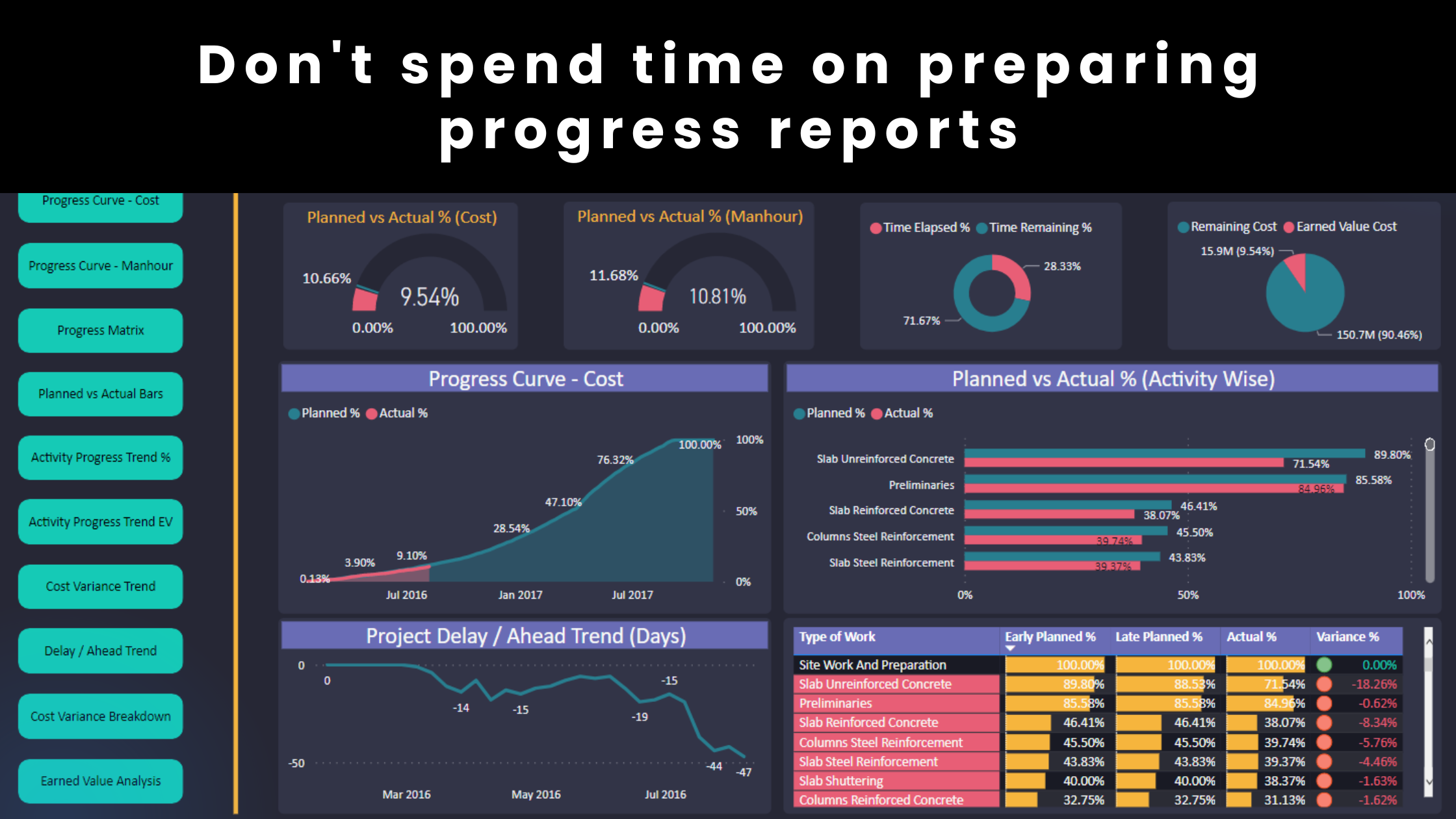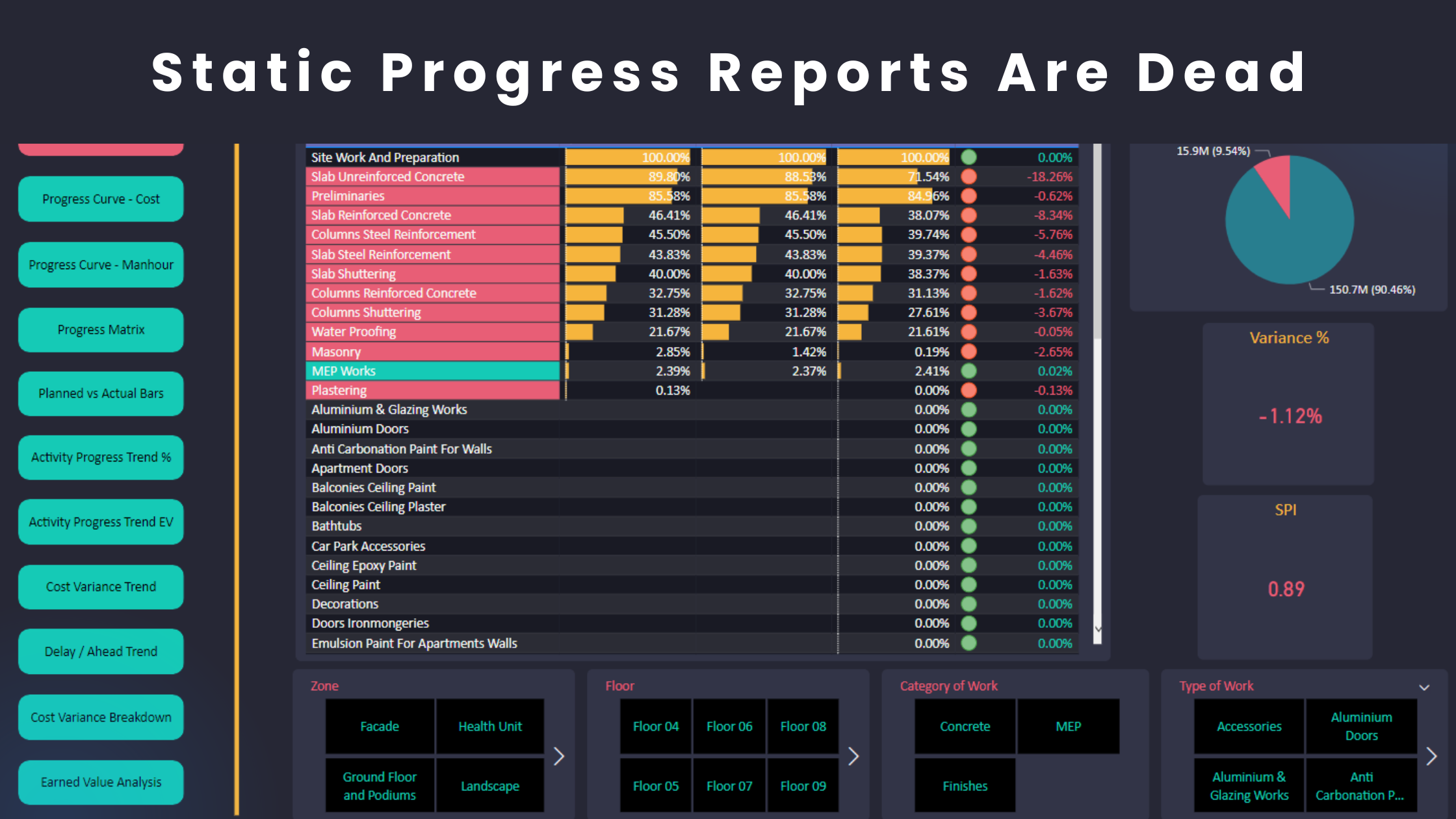How should we manage the schedule delays? Should we make regular schedule changes to ensure that the schedule updates don’t show any delays? Should we develop a recovery schedule? Or perhaps show the delays as they are? Before I answer this question, I would like to take a step back and explain what a delay actually is.
What is a delay?
A delay can mean different things to different people. A delay could be in:
- Critical or Non-Critical Activity Start
- Critical or Non-Critical Activity Finish
- Project Completion
- A milestone
Metaphorically speaking, a delay is an illusion – it doesn’t exist. Some plants grow slower than others. Some people eat slower than others. It takes time to go from point A to point B. Is there a delay here? No, it is just the natural course of execution. Humans, however, love to put labels and make a meaning of everything. A good example of that is labeling delays in construction projects. The only thing that allows us to determine a delay in construction is having a baseline schedule in place. Without a baseline, construction projects will, like everything else in life, just follow the natural course of execution. I wanted to give this introduction to emphasize the importance of the baseline schedule in identifying and managing project delays.
How do the majority of planning engineers manage schedule delays?
In my experience, many planning engineers intentionally make regular schedule changes in the schedule updates to recover the delays and show the project is on track. This is not a good practice. In fact, the schedule changes should be kept to a minimum, just enough to ensure the reliability of the schedule and not to recover the delays. Otherwise, the baseline becomes useless and hence, we lose the value of the only tool that helps us define delays. If we continue to show that the project is on track, why do we even need a baseline in the first place? When you forecast a delay, this suggests that there is something wrong and requires your attention. You might need to increase the manpower or expedite the material delivery.
How should we develop a recovery schedule?
When the delays become significant, it becomes very hard to follow the baseline schedule. This is when a recovery schedule is needed. A recovery schedule reflects the Contractor’s corrective actions and recovery measures to ensure the timely completion of the project. This may involve increasing manpower, crashing and fast-tracking for the remaining work of the contract to recover the delays. However, recovery schedules should not be frequently developed because in this case, you are making more changes to show the project is on track, which as I mentioned before, is not a good practice. For example, in a project that is 2 years long, it is not recommended to develop a recovery schedule every month but it might be a good idea to create one only when the delays have become significant in a way that makes it very hard to use the previous recovery schedule as a practical reference point. There are so many variables that should be considered to determine the need for a recovery schedule but I just wanted to give you an idea about the concept. The recovery schedule topic needs more than one article to fully explain it.
The scariest word in construction is “delay” because of the associated consequences that can include liquidated damages, job loss, prolongation cost, arbitration, court, market reputation, etc. Here are a few points that should be considered when a recovery schedule is developed.
– The recovery schedule should be developed when there is a significant delay and it becomes impractical to follow the baseline.
– The baseline schedule remains the ultimate and most important reference point for progress measurement.
– The progress can be reported against both the baseline and the recovery schedule to see how “effective” your recovery effort is. However, under any circumstances, the performance measurement against the baseline must be shown in all reports including the official submissions.
– Frequent recovery schedules should not be developed. Otherwise, the recovery schedules and the baseline lose their value. As a general practice in planning, schedule changes should be kept to a minimum.
Note that everything that has been discussed so far assumes that the delay is the Contractor’s responsibility. In other cases, the delay is beyond the reasonable control of the Contractor and it becomes impossible to complete the project on time. Therefore, an extension of time claim might be needed.
Embrace delays
The best way to overcome your fear of something is to face it. Instead of hiding behind some logic changes that will give you a temporary sense of relief, we should develop effective coping mechanisms and recovery measures. We should approach schedule delays with a healthy mindset. Take the time to analyze the situation and develop feasible corrective actions. Modern scheduling software tools such as Primavera P6 and MS Project have serious limitations in managing projects so you will eventually need to do a lot of work using other tools such as Excel or Power BI to support your recovery effort.
Regards,
Osama Saad, MBA, PMP, PSP, CCP, PMI-SP










